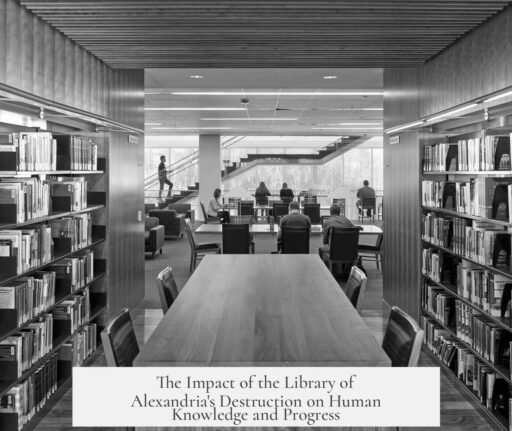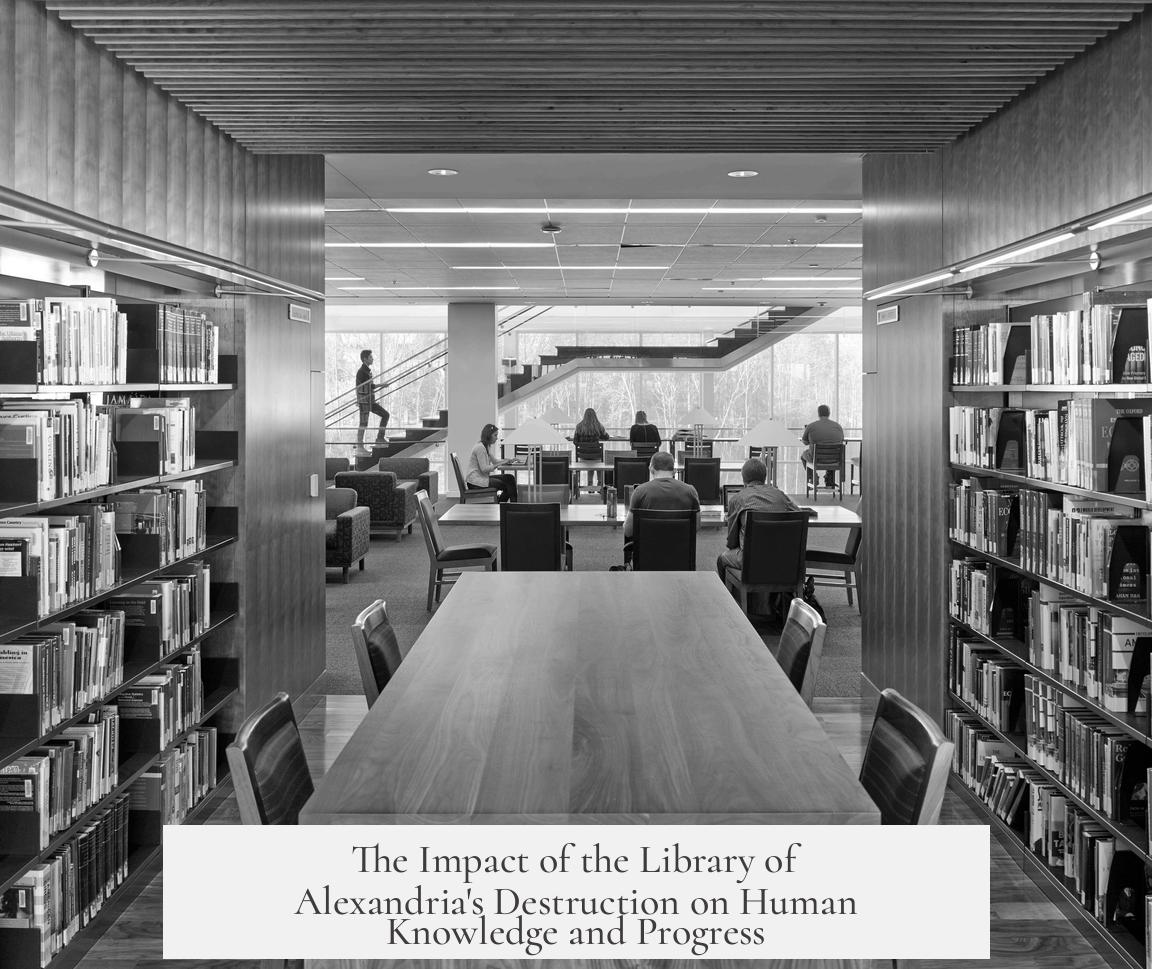The destruction of the Library of Alexandria did not put human knowledge and technological advancement as far back as often claimed. Despite the library’s symbolic importance, its loss did not halt progress or erase all critical knowledge. The setback was limited and more nuanced than popular myths suggest.
The library, once the largest of the ancient world, was neither as vast nor as uniquely comprehensive as some ancient and modern accounts claim. Ancient writers exaggerated its collection size, citing figures from 400,000 to 700,000 scrolls. Modern historians estimate a more plausible range of tens of thousands, which still made it significant, but not irreplaceable. This suggests that many works stored in Alexandria existed elsewhere in the Roman world’s many libraries.
The catastrophic image of total knowledge loss from a single event is misleading. The Library of Alexandria’s destruction happened over time, through several incidents, and may have occurred centuries before the supposed final burning. Julius Caesar’s siege of Alexandria in 48 BCE caused a fire that damaged the royal library or its precinct. A later fire during the sack of Alexandria by Emperor Aurelian in the 3rd century may have caused further damage. The famous destruction of the Serapeum in 391 AD by a Christian mob ended the daughter library but likely long after the original library had ceased operations.
The narrative that the Arab conquest in the 7th century destroyed the library is a 12th-century fabrication. Contemporary sources from the Arab conquest period do not mention any library destruction. This myth emerged centuries later without credible historical evidence.
The knowledge lost was partly archaic and culturally specific, such as the Archaic Epic Cycle, which disappeared from popular use by the 3rd century and likely was lost due to changing scholarly priorities, economic conditions, and shifts in literary media—from scrolls to codices. This loss was not a sudden event tied solely to Alexandria’s library but part of a wider gradual decline in some kinds of knowledge transmission during that era.
Science and learning at the time of these events were already stagnating. The Roman Empire persisted for centuries after some of these incidents, but political instability, economic decline, and wars contributed more profoundly to knowledge loss than any single library’s destruction. Intellectual activity declined in the West but was preserved and enhanced in parts of the Eastern Roman (Byzantine) Empire and through Christian Nestorian scholars. This knowledge was then transmitted to the Arab world and eventually reintroduced to Europe in the Middle Ages, spurring the Scholastic revival and eventual rise of empirical science.
Importantly, ancient science was mostly theoretical. Greek and Roman natural philosophy seldom connected scientific ideas with practical technology. Technology was developed separately by artisans and craftsmen, outside formal philosophical circles. Experimental science, which combines theory with empirical proof and practical application, emerged only centuries later during the late Middle Ages and the Renaissance.
While Carl Sagan and others have speculated about lost scientific insights stored in the library, these remain conjectural. The library likely housed significant works but not uniquely advanced scientific knowledge that could have accelerated humanity’s technological progress dramatically, such as space travel in the 1500s. This exaggeration ignores the complex historical, social, and technological factors needed for such developments.
Other historical episodes, such as book burnings and losses in the New World during the European conquests or destruction of libraries in the Muslim world during famines and Crusades, may have caused far greater losses to knowledge and culture than Alexandria’s library.
- The Library’s destruction occurred gradually through multiple events, not a single catastrophic fire.
- The loss did not erase all knowledge; copies existed in many other libraries.
- Stagnation of intellectual progress was due largely to broader political and economic factors.
- Ancient science was largely theoretical, separating philosophy from practical technology.
- The legend of the library’s destruction delaying space travel is an exaggeration without historical basis.
- Subsequent preservation of knowledge in Byzantium and the Muslim world helped transmit classical learning back to Europe.
- Other historic events caused significant cultural and knowledge loss, often more so than Alexandria’s library.
Did the destruction of the Library of Alexandria cause a major setback to European culture?
No, it did not set European culture back significantly. The Roman world had many libraries, and the Roman Empire continued to expand for centuries after the Library’s loss.
Was the Great Library truly unique in its collection?
The belief that it held unique works not found elsewhere is unsupported. Many writings were available in other libraries and through other means at the time.
What kinds of information were lost due to the Library’s destruction?
Some ancient works, like parts of the Archaic Epic Cycle, vanished around the 2nd and 3rd centuries, but this loss likely wasn’t directly tied to Alexandria’s library fire.
Are popular stories about the Library’s destruction accurate?
Many are myths. The Great Library had probably been destroyed centuries before later events. The accounts blaming Christian mobs or Arabs lack solid evidence.
How was ancient knowledge preserved despite the Library’s destruction?
Ancient science and learning were preserved in the Eastern Empire and through Nestorian Christians, who passed knowledge to the Arabs. This eventually reignited learning in Medieval Europe.




